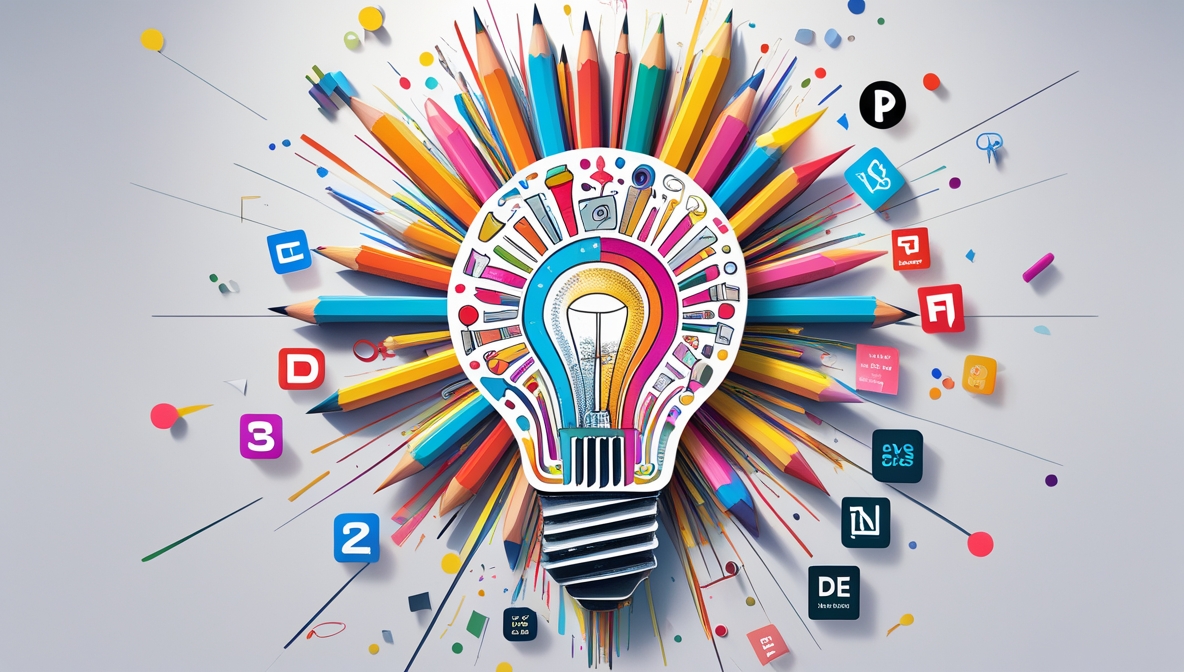Open-source tools offer a cost-effective and versatile way for designers to create without sacrificing quality. From image editing to vector illustration, these tools have grown into powerful alternatives to proprietary software. One standout in this space is GIMP, a feature-rich image editor capable of professional-grade work. This article highlights the advantages of open-source tools and examines some of the best free options available.
Why Choose Open-Source Design Tools?
Open-source tools are freely available and supported by active communities, providing constant updates, bug fixes, and innovative features. They empower designers to create without subscription fees, offer customizability, and ensure access to the source code for advanced modifications. These tools are also cross-platform, ensuring flexibility across different operating systems.
Top Open-Source Design Tools
1. GIMP (GNU Image Manipulation Program)
GIMP is one of the most popular open-source tools for image editing. Its capabilities rival paid software, making it an essential tool for photo retouching, composition, and graphic design. Key features include:
- Layer-Based Editing: Manage complex projects with ease using multiple layers.
- Customizable Interface: Adjust tools and panels to fit your workflow.
- Plugin Support: Expand functionality with a wide range of plugins.
- File Format Compatibility: Handle popular formats like JPEG, PNG, and PSD.
GIMP is ideal for designers looking to edit photos, create artwork, or design web graphics.
2. Inkscape
Inkscape is a vector graphics editor tailored for scalable designs. It’s perfect for creating logos, illustrations, and technical diagrams. Features include:
- Node Editing: Refine paths and shapes with precision.
- SVG Support: Seamless compatibility with the widely-used SVG format.
- Text Tools: Create typographic designs with extensive font and layout options.
- Bitmap Tracing: Convert raster images to vector art.
Inkscape is user-friendly yet powerful enough for professional design projects.
3. Krita
Primarily focused on digital painting, Krita is beloved by artists for its intuitive tools and brush engines. It’s particularly useful for concept art, storyboarding, and illustrations. Highlights include:
- Customizable Brushes: Fine-tune brushes for unique textures and effects.
- Layer Management: Organize complex compositions efficiently.
- Animation Support: Create frame-by-frame animations within the program.
Krita is a strong choice for illustrators and animators who need high-performance tools without a price tag.
4. Blender
Blender is a powerhouse for 3D modeling, rendering, and animation. It has applications in gaming, visual effects, and architectural visualization. Features include:
- Comprehensive Toolset: From modeling to rigging and simulation, it covers all aspects of 3D design.
- Rendering Engines: Built-in rendering tools like Cycles and Eevee ensure stunning visuals.
- Open Collaboration: Join projects and contribute to open movie initiatives.
Blender’s versatility makes it indispensable for both beginners and professionals in 3D design.
5. Darktable
Darktable is an open-source alternative to Adobe Lightroom, offering robust tools for photo editing and raw image processing. Its features include:
- Non-Destructive Editing: Safeguard original files while making adjustments.
- Advanced Color Grading: Achieve precise tonal corrections with customizable tools.
- Lens Correction: Automatically correct distortion and aberrations based on lens profiles.
Darktable is an excellent choice for photographers aiming to manage and enhance large image collections.
6. Scribus
Scribus is a desktop publishing tool designed for creating layouts for print and digital formats. Its features include:
- Pre-Press Tools: Handle CMYK colors, ICC profiles, and spot colors for professional print output.
- Interactive PDFs: Create forms and other dynamic elements.
- Template Library: Access pre-made layouts for magazines, brochures, and more.
Scribus bridges the gap between graphic design and publishing, making it a great tool for creating marketing materials.
Benefits of Adopting Open-Source Tools
1. Cost Savings
Eliminate subscription costs and expensive licenses without sacrificing quality. Free tools allow independent designers, students, and small businesses to work on professional-grade projects.
2. Flexibility
Open-source tools often support multiple operating systems, including Linux, macOS, and Windows, ensuring compatibility across devices.
3. Community-Driven Development
Updates, bug fixes, and new features are frequently added by dedicated communities, ensuring tools remain relevant and functional.
4. No Vendor Lock-In
Proprietary software often ties users to specific ecosystems. Open-source tools provide more freedom, including export options for universal file formats.
5. Customizability
Advanced users can modify source code to suit their specific needs, creating bespoke solutions unavailable with commercial software.
Tips for Getting Started
- Explore Tutorials: Open-source tools often have extensive documentation and tutorials created by their communities.
- Join Forums: Participate in user forums or subreddits for advice, troubleshooting, and inspiration.
- Experiment: Dedicate time to familiarize yourself with the features and customize the interface to your liking.
- Combine Tools: Use multiple tools together. For instance, edit images in GIMP and import them into Scribus for publication.
Closing Thoughts
Open-source tools have leveled the playing field for creatives, offering powerful capabilities without financial barriers. GIMP, Inkscape, Krita, Blender, Darktable, and Scribus are just a few examples of how these tools can transform workflows. Whether you’re editing photos, crafting illustrations, or exploring 3D modeling, open-source solutions empower designers to bring ideas to life.
